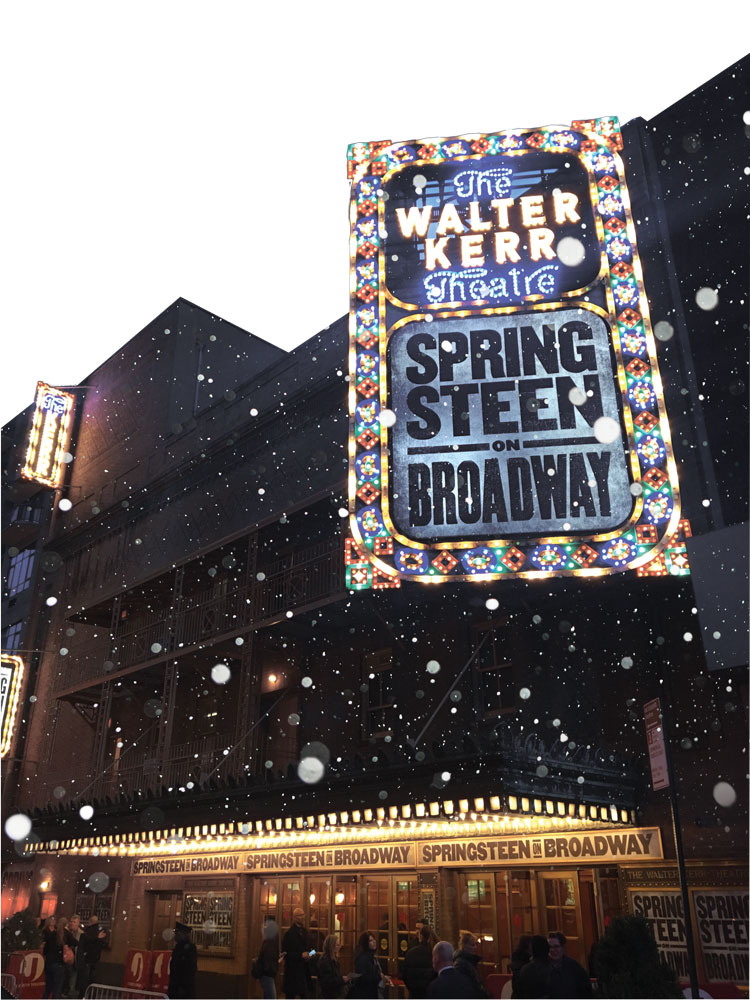'Springsteen on Broadway' gives lawyers 3 storytelling lessons

Photo by James Kirkisis/Shutterstock.com
2 Sympathetic Characters
For example, the initial movement covers Springsteen’s childhood in four songs from the early albums. He ruthlessly pares down the many family characters and friends depicted in Born to Run to two: his mother and father. There is the lightness and dancing spirit of his mother, captured in imagery of her lyrical movement and sounds of her heels clicking down the pavement as she returns from her job as a legal secretary, that somehow became part of Springsteen’s own rock ’n’ roll onstage performance identity. He sings a seldom-performed song about his mother, “The Wish”: “Well it was me in my Beatle boots, you in pink curlers and matador pants, Pulling me up off the couch to do the twist for my uncles and aunts ... .”
Contrasting with the lightness and intimacy of his mother’s spirit, there is the powerful darkness and coldness of the shadow cast by Springsteen’s ever-distant father. The Boss shares with the audience a brief memory of retrieving his father from a bar while his mother stays behind in the car. He remembers his father bent over the bar in the darkness, specifically the image of the powerful lower half of his father’s torso clad in a working-class outfit recalled from a child’s perspective. Of course, this is precisely the same black costume that Springsteen now wears on stage. The image frames his haunting rendition of “My Father’s House”:
My father’s house shines hard and bright
It stands like a beacon calling me in the night
Calling and calling so cold and alone
Shining ’cross this dark highway where our sins lie unatoned
As Springsteen explains in his autobiography: “Those whose love we wanted but could not get we emulate. It is dangerous, but it makes us feel closer, gives us an illusion of the intimacy we never had.”
Takeaways for Lawyer-Storytellers
I sat in the box after the show scribbling a list of storytelling ideas for lawyers on the back of my program:
- 1. Some of Springsteen’s genius is to make the impossibly complex simple, to make presentation of compulsively thought-through and overdetermined material appear spontaneous, effortless and intuitive. Perhaps all story-tellers, including lawyers, are in this particular way part Jersey Boardwalk hustlers too.
2. Work to be present, and believe fully in your story. Recognize, capture and employ strategic, emotionally transformative images as Springsteen did. Depict characters sympathetically and economically, and use perspective creatively. Keep the plot simple, if possible—employ clear narrative arcs (e.g., a beginning, a middle and an end) and employ purposeful and familiar narrative designs (e.g., Springsteen’s journey).
3. It is impossible to recapture the past literally. Stories are reinventions—the past transformed by imagination and emotion—and narrative truth turns on verisimilitude (lifelikeness). We reinvent the past to make it come alive, as well as to find truth and meaning in our experiences, whether depicted in story or song. Springsteen on Broadway is a reflection on memory and identity—how stories enable us to inhabit the past and relive it through who we are today—whether we are in a theater or a courtroom.
Coda
I didn’t want to go back out into the storm just yet. The ushers kindly left me alone in the box. Perhaps they misbelieved that I knew Springsteen personally or had some connection with him. Perhaps I did. And perhaps you do, too.
Philip N. Meyer, a professor at Vermont Law School, is the author of



